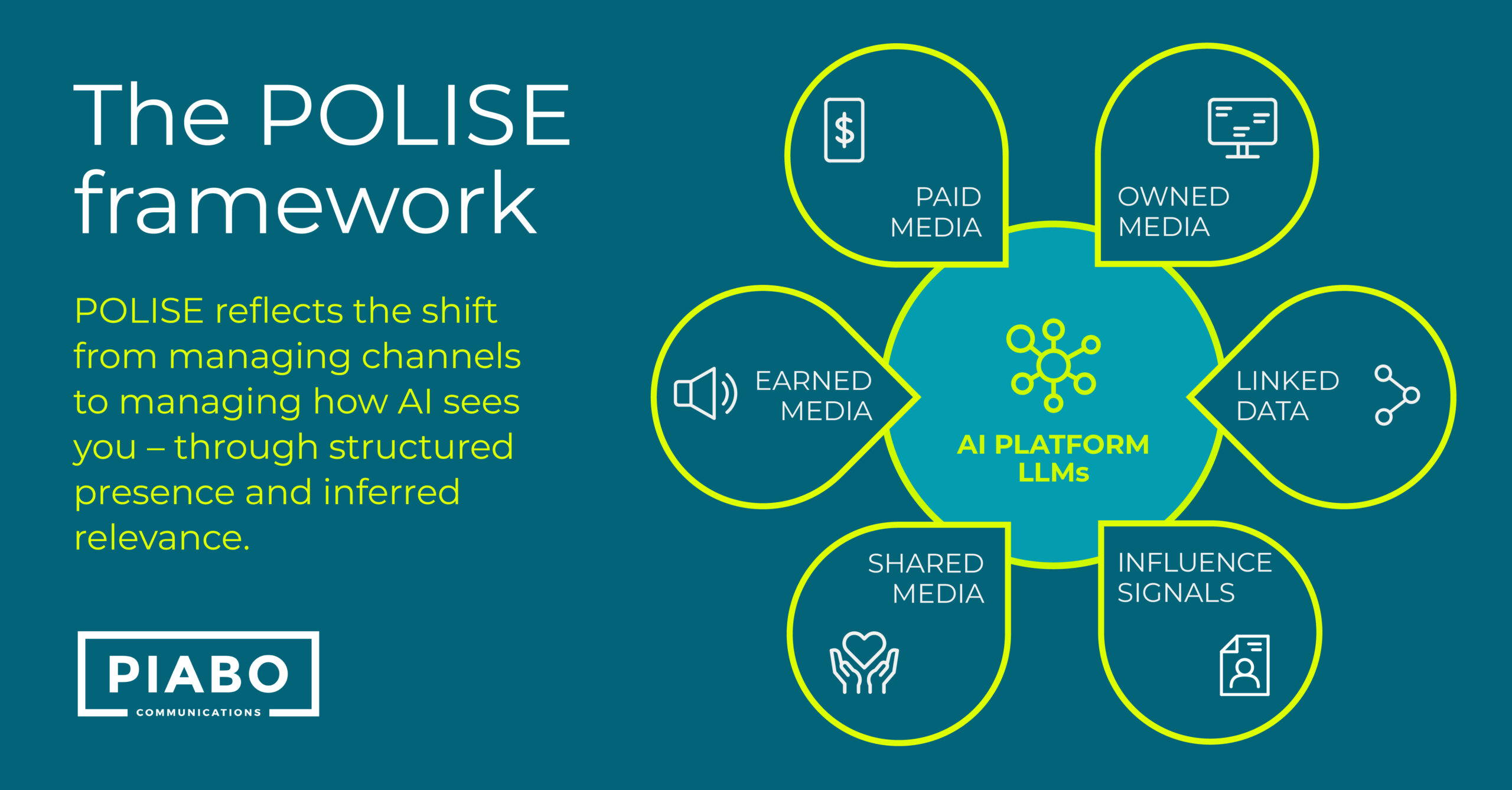For many years, the model of Paid, Earned, Shared, and Owned media was considered the gold standard for structuring communications efforts. It provided a reliable framework for achieving reach and building reputation. But the rules of the game have fundamentally changed.
Today, it’s no longer an editor or viral social media post that solely determines visibility. Instead, AI systems, language models, and intelligent platforms increasingly take over this task. They read, interpret, and link content – and based on this, influence recommendations, search results, and even business decisions.
Why traditional models no longer suffice
The model originates from a time when humans rated content. Today, however:
- Search is AI-native.
- Visibility is interpreted automatically.
- Viral attention is fleeting.
Modern communication must not only produce content but also understand how it is read and processed by large language models (LLMs) and geo-based AI platforms. It’s not just about being visible – it’s about becoming truly machine-visible.
The further development: POLISE
At PIABO Communications, we’ve reimagined the classic model and developed a framework tailored to the realities of AI: POLISE.
This model expands the four familiar categories with two critical dimensions that significantly contribute to visibility in AI systems: Listed Presence and Inferred Signals.
The six dimensions of POLISE at a glance:
P – Paid
Paid content: Sponsored content, ads, paid influencer placements
O – Owned
Own content: Website, blog, newsletter – fully controllable
L – Linked Data (new)
Structured and semantically connected data across platforms like Crunchbase, Google Business, GitHub and more – including schema markup, backlinks, and machine-readable profiles. Essential for AI-driven discoverability.
I – Influence Signals (new)
The credibility a brand earns through third-party mentions by trusted individuals, creators, or experts – and how these are semantically interpreted by AI systems. Think: co-mentions, quotes, associations, trust.
S – Shared
Shared content on social media, comments, community reactions. Fleeting, but not unimportant
E – Earned
Press coverage, expert quotes, organic recommendations – third-party credibility
What makes POLISE so relevant?
While earlier models focused primarily on media reach, POLISE shifts the perspective to structural visibility in AI systems. Each of the six categories contributes differently to how a brand or person is perceived by large language models:
- Paid and shared help with initial attention
- Owned and Listed provide machine-readable clarity
- Earned strengthens trust via third parties
- Inferred is the invisible result – the “semantic reputation” that machines derive themselves
POLISE is the basis of PIABO GEO
We have not only developed the POLISE model – we have incorporated it into our new PIABO GEO product solution.
PIABO GEO is the first communication solution that specifically supports brands in becoming visible in LLMs, AI search systems and geo-based AI platforms. It’s not just about content, but about structured relevance, the right data points and visible positioning in machine ecosystems.
Conclusion
Previous communications models were valuable frameworks – but AI has fundamentally changed the requirements.
With POLISE, we are creating a future-proof basis for strategically aligning communication for the age of artificial intelligence.
Curious about how your brand appears in AI-based systems today? Talk to us – we would be happy to carry out a visibility audit.
Contact: geo@piabo.net
Further information on PIABO GEO: geo.piabo.net


